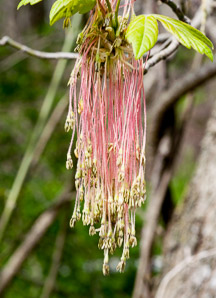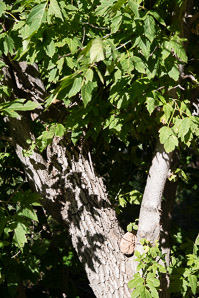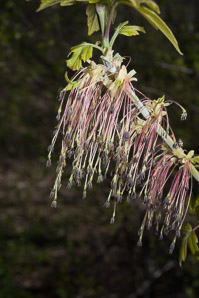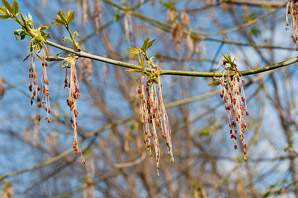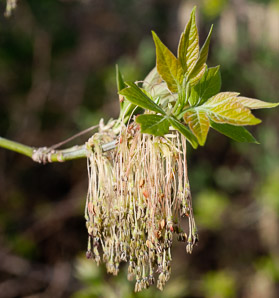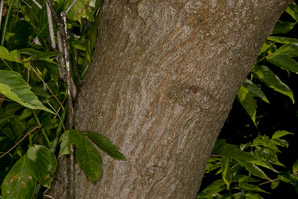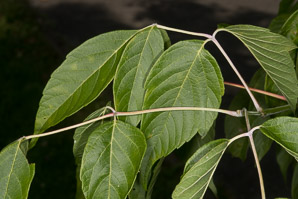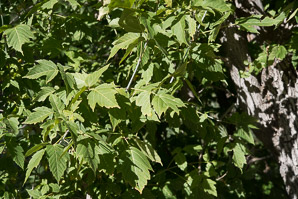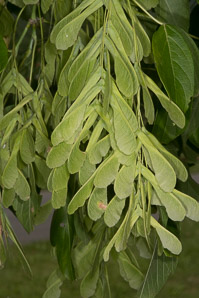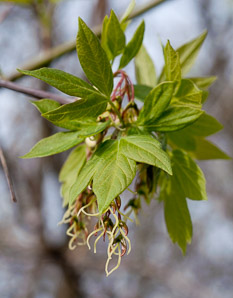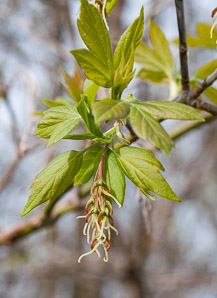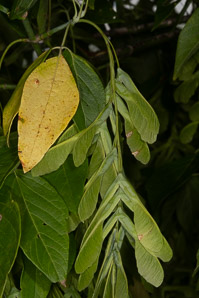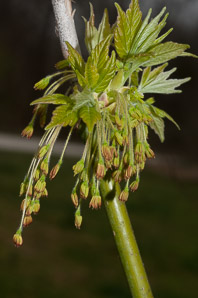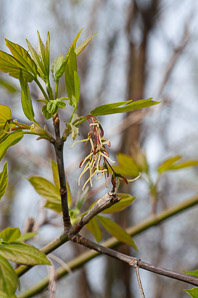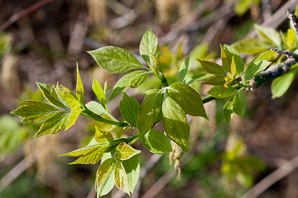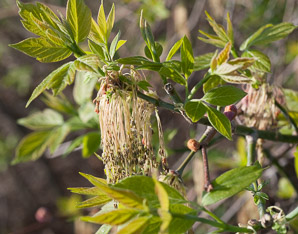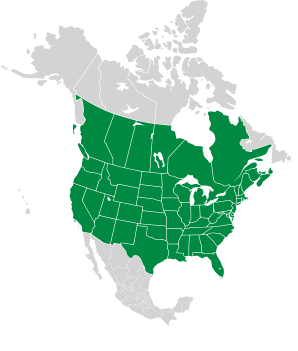
|
Acer negundo L. Boxelder, ashleaf maple, boxelder maple, Manitoba maple, California boxelder, western boxelder
It is a rather bewildering fact that boxelder is considered by many to be the best known and most widespread of the native American maples. Considering, after all, that it isn't called a maple, and that many other maples are also common in North America. Oh, and that its leaves don't usually have the five-pointed iconic look of most other maples. I grew up on the Maine coast with one of these in the front yard, and never once suspected it of being a closet maple tree. Identification: Trees are up to 69′ (21 m) high and about 26′ (8 m) around, unevenly branched, with thin, shallowly furrowed gray or light brown bark. Young branches are light green. It is a tough tree, tolerating both drought and up to 30 days of flooding. Leaves are opposite, in groups of 3-5 (rarely 7) leaflets, each 2-4″ (5-10 cm) long. Leaf shapes are variable: pointed ovals with smooth edges, or a few spikes similar to poison ivy leaves, or a more "maple-like" shape similar to red maple. The flowers are dioecious—that is, male flowers (Photo 5) occur on separate trees than female flowers and fruits (Photo 12). The fruits are winged samaras. Edibility: Boxelder sap, though not as sugary as that of sugarmaple, is sweet enough so that it is sometimes tapped for making syrup. Online References:
The USDA Forest Service's Silvics of North America site Plants for a Future, a resource and information centre for edible and otherwise useful plants The University of Connecticut Plant Database The University of Wisconsin-Green Bay Cofrin Center for Biodiversity The Image Archive of Central Texas Plants The University of Florida Institute of Food and Agricultural Sciences SEINet—the Southwest Environmental Information Network The Integrated Taxonomic Information System References:
Sibley, David Allen, The Sibley Guide to Trees, Alfred A. Knopf, 2009, p. 346 1 · 4/4/2012 · North Central Railroad Trail, End, Phoenix, Maryland · ≈ 4 × 6″ (10 × 15 cm) 3 · 5/4/2013 · Nashua River Rail Trail, Groton Center, Groton, Massachusetts · ≈ 6 × 8″ (14 × 20 cm) 4 · 4/6/2010 · Nashua River Rail Trail, Groton, Massachusetts · ≈ 14 × 9″ (35 × 23 cm) 5 · Male flowers. · 4/13/2010 · Nashua River Rail Trail, Groton Center, Groton, Massachusetts · ≈ 5 × 8″ (13 × 19 cm) 6 · 7/19/2017 · Monongahela National Forest, Monongahela, West Virginia · ≈ 1½ × 1′ (52 × 34 cm) 7 · 9/1/2014 · New Mexico · ≈ 1½ × 1′ (47 × 31 cm)
Acer negundo description by Thomas H. Kent, last updated 25 May 2020. © FloraFinder.org. All rights reserved. |
8 · 7/19/2017 · Monongahela National Forest, Monongahela, West Virginia · ≈ 8 × 5″ (20 × 13 cm) 9 · 9/1/2014 · New Mexico · ≈ 2½ × 1½′ (79 × 53 cm) 10 · 7/19/2017 · Monongahela National Forest, Monongahela, West Virginia · ≈ 5 × 8″ (13 × 20 cm) 11 · Female flowers and early formation of samaras. · 4/13/2010 · Nashua River Rail Trail, Groton Center, Groton, Massachusetts · ≈ 4 × 6″ (10 × 15 cm) 12 · Female flowers and early formation of samaras. · 4/13/2010 · Nashua River Rail Trail, Groton Center, Groton, Massachusetts · ≈ 4½ × 7″ (11 × 17 cm) 13 · 7/19/2017 · Monongahela National Forest, Monongahela, West Virginia · ≈ 4½ × 7″ (12 × 18 cm) 14 · 3/20/2012 · Gunpowder Falls State Park, Phoenix Rd, Phoenix, Maryland · ≈ 3½ × 5″ (9.2 × 13 cm) 15 · Female flowers and early formation of samaras. · 4/13/2010 · Nashua River Rail Trail, Groton Center, Groton, Massachusetts · ≈ 4½ × 7″ (11 × 17 cm) 16 · 4/13/2010 · Nashua River Rail Trail, Groton Center, Groton, Massachusetts · ≈ 8 × 5″ (19 × 13 cm) 17 · Male flowers. · 4/13/2010 · Nashua River Rail Trail, Groton Center, Groton, Massachusetts · ≈ 9 × 6″ (22 × 14 cm) Range: Zones 2-9:
|
